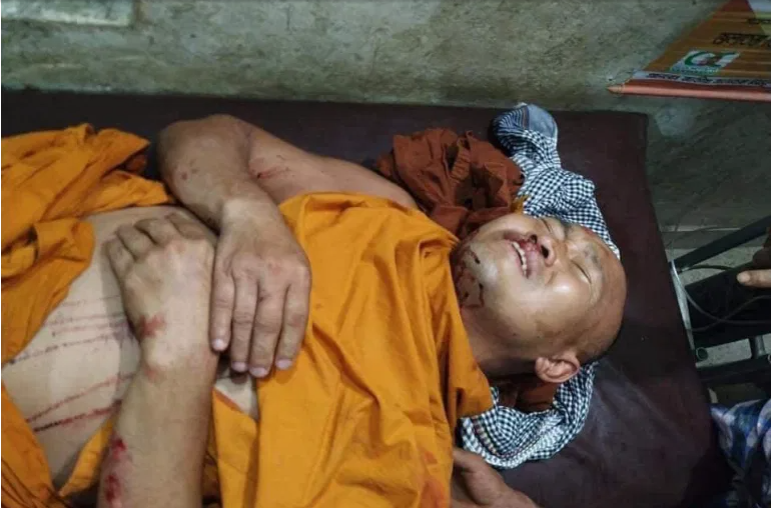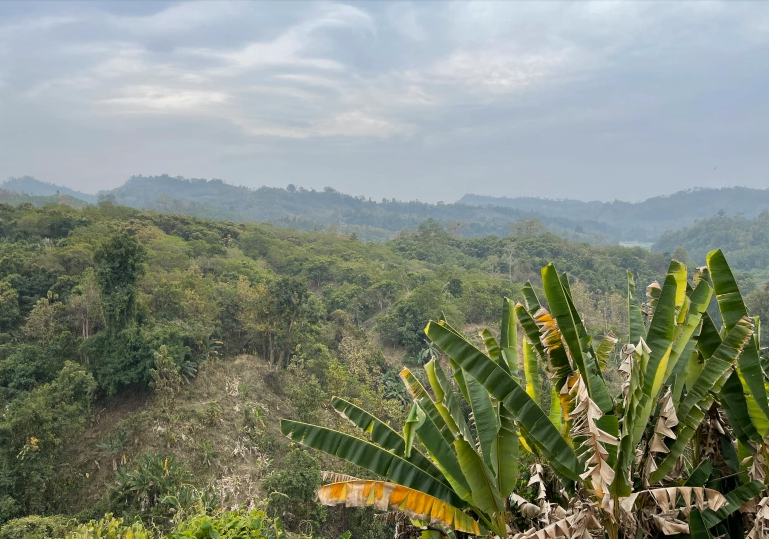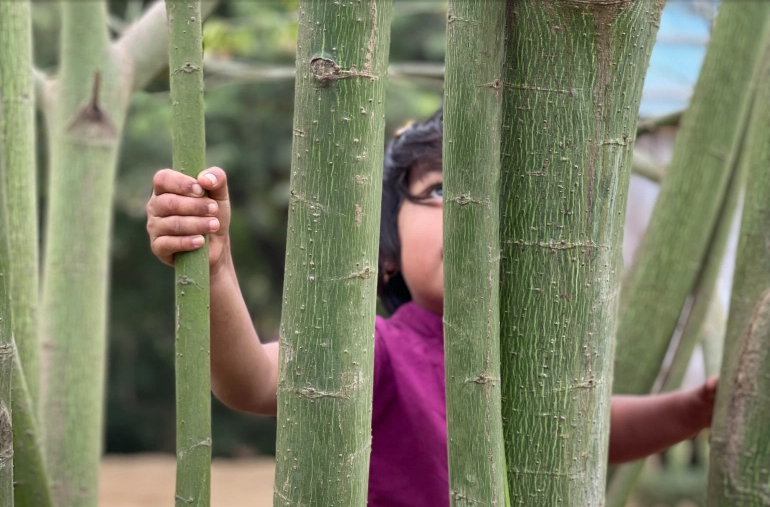Attacks, land grabs on Bangladesh’s Indigenous groups
- Al Jazeera
- Aug 3, 2021
- 6 min read
Updated: Jul 12, 2024
From targeted attacks to land grabs, the country’s most marginalised people suffer as little help comes from the government.

Buddhist monk Agrojyoti Bhante who was brutally attacked by two machete-wielding men at a monastery in Khagrachari, Chittagong Hill Tracts, Bangladesh [Courtesy of Kapaeeng Foundation]
By Zarif Faiaz
30 Jul 2021
Dhaka, Bangladesh – On the night of May 31, Agrojyoti Bhante was brutally attacked by two machete-wielding men at a monastery in Khagrachari, 270km (168 miles) south of capital Dhaka in the Chittagong Hill Tracts (CHT).
The attackers, later identified as two Bengali construction workers who worked at the monastery, also looted about 60,000 takas ($700) from the monastery and left the 47-year-old Buddhist monk, belonging to one of Bangladesh’s Indigenous communities, for dead.
While no accurate data on the number of Indigenous people in Bangladesh is available, a census conducted by the government in 2011 found they are about 1.6 million.
But Indigenous and activist groups claim their population is at least 3 million, or 2 percent, of more than 160 million people in the Muslim-majority country.
There are about 54 different Indigenous communities in the country, the majority of them living in the northern and southeastern plains. The rest, about 20 percent, are in CHT – most of them Buddhists. In the plains, most are Christians.
Three attacks in a week
Indigenous groups and activists say the communities suffer from gross human rights violations and disparities.
On May 30, a day before the Khagrachari incident, a case of arson against the Indigenous Khasi people was reported at Baralekha in Moulvibazar district, 278km (170 miles) from CHT.
Unknown miscreants had cut down thousands of betel leaf trees at an Indigenous farm that served as the primary source of income for at least 48 families in the area, who, according to sources, incurred a loss of at least $8,000.

A general view of the Chittagong Hill Tracts, Bangladesh [Zarif Faiaz/Al Jazeera]
According to local media reports at the time, unidentified settlers were busy illegally occupying three other Indigenous betel leaf farms in a different area of the town, triggering anger among the Khasi community.
On June 6, The Daily Star newspaper reported that in Dinajpur, some 350km (217 miles) from Moulvibazar on the other end of the country, a lawsuit was filed against 22 Indigenous Santal community members.
Plaintiff Mahbubur Rahman, a local Bengali, claimed the men, led by Rabindranath Soren, the president of a local Indigenous rights organisation, allegedly pillaged his crop worth $530.
Santal community leaders protested against the lawsuit, calling it a false allegation to harass the Indigenous people who were engaged in a land dispute with Rahman.
While the monk in Khagrachari survived the attack, the local administration ultimately came to evict the illegal occupiers in Moulvibazar, and promises were made by the local law enforcement authority to look into the land dispute in Dinajpur.
But three separate incidents of attacks on Indigenous people in a span of a week sparked an atmosphere of fear among the marginalised communities.
Land grab by Bengali settlers
Locals believe the attacks were carried out as part of a larger ploy to grab the lands belonging to the Indigenous people – an issue far too common in a country facing a decades-old rift between the Indigenous communities and the Bengali settlers.
The strife between the settlers and the Indigenous communities has a long and complex history that goes back to 1980, when landless Bengali families first began migrating to CHT en masse.
In the years that followed, Bengali settlers outnumbered the Indigenous population in the southern region.
A 2002 paper by Zobaida Nasreen and Masahiko Togawa, titled Politics of Development: “Pahari-Bengali” Discourse in the Chittagong Hill Tracts, shows that in 1959, the Indigenous population in CHT was 91 percent, with the rest being settlers.
In the next 30 years, by 1991, the settler population had risen to 48 percent in the region, displacing much of the Indigenous people, causing them to drop to 51 percent.
Citing a 2016 book by Devasish Roy, circle chief of the Chakmas, the largest Indigenous group in the country, The Daily Star reported that approximately 200,000 to 450,000 Bengali people were rehabilitated in the region between 1979 and 1985.
More than 100,000 Indigenous people migrated to neighbouring India during this time, though many of them returned in the 1990s.
The trend picked up in other parts of Bangladesh as Bengali settlers continued to move into Indigenous territories – in the hills as well as the plains – to accommodate a booming Bengali population.
The settlements sparked land disputes and violent clashes between the settlers and the local communities that continue to this day.

An Indigenous child in the Chittagong Hill Tracts, Bangladesh [Zarif Faiaz/Al Jazeera]
Phillip Gain, researcher and director of Society for Environment and Human Development (SEHD), outlines how land disputes have always been at the centre of contention between settlers and Indigenous communities.
According to his book, Survival on the Fringe: Advisasis of Bangladesh, 85 percent of Indigenous people in the northwestern region of the country are now completely landless, even though they held much of the lands in the region prior to the arrival of the Bengali settlers.
Khokon Suiten Murmu, programme coordinator at Kapaeeng Foundation, an Indigenous rights watchdog and son-in-law of Soren, the Indigenous leader sued in Dinajpur, says that land-grabbing is a common tactic used by the Bengali settlers.
“The case in Dinajpur, where 22 Indigenous men were sued along with my father-in-law, is a prime example of how land grabbers manipulate the system in order to harass the less fortunate Indigenous groups,” Khokon told Al Jazeera, calling the case against them “false and fabricated”.
“Land grabbers like (Rahman) even have records of hiring armed hitmen to carry out attacks on the local Indigenous men in order to intimidate them. This is nothing new. We just live to fight another day,” he added.
Activists say the COVID-19 pandemic has worsened the crisis, with land-grabbing continuing “with full force” in the absence of active media.
A report by the non-profit Kapaeeng Foundation reveals that between March and June 2020, at least 6,504 acres of Indigenous land were either fully occupied or under a process of occupation.
“Most members of the local Indigenous communities are uneducated peasants who have been historically enjoying rights to their ancestral lands,” says Khokon.
“Settlers tend to assume these lands are unoccupied since there is no paperwork and they use the system to their advantage by deceit or by force.”
Khokon said the Bengali settlers are well-connected with local influential men “which makes it tougher for the Indigenous communities to take legal actions against them”.
That is why lodging formal complaints with the police does little to help the situation.
‘A lot more remains to be done’
A 2019 report in The Daily Star revealed that some 22,000 complaints filed with the Chittagong Land Dispute Resolution Commission since its inception in 1999 have not been resolved since the government failed to formulate the panel’s rules of business all these years.
Kyaw Shwe Hla, chairman of Bandarban Hill District Council in CHT and a member of the commission, says there has been no progress in formulating the rules of business.
“We were supposed to wait for instructions from the land ministry in a meeting, but due to COVID-19, everything is suspended now. We will hopefully resume operations after things calm down a little. But as of now, there is no progress.”
In 1997, the Chittagong Hill Tracts Peace Accord promised “to uphold the political, social, cultural, educational and economic rights of all the people of Chittagong Hill Tracts region”.
Even the government’s Seventh Five Year Plan for 2016-2020 outlined several commitments towards addressing the problems faced by the Indigenous population of the country, both in CHT and the plains, showcasing commendable goodwill on the government’s part.
But issues such as the Land Dispute Resolution Commission’s ineffectiveness pit the government’s actions against its words.
Pallab Chakma, an Indigenous rights activist and executive director of Kapaeeng Foundation, says the government urgently needs to act on its promises.
“In the past years, there have been a few positive notes from the government and its agencies. Even in the Moulvibazar case of attack on the betel leaf farm, we have seen the authorities take prompt action, thankfully. But a lot more remains to be done and the progress is slow,” Pallab told Al Jazeera.
Meanwhile, attacks on the disadvantaged and socially excluded groups continue.
On June 15, unidentified perpetrators raped and assaulted an Indigenous woman in Tangail, northwest of capital Dhaka. On June 19, an Indigenous man was killed in Bandarban, CHT, allegedly by hardline Indigenous activists because he had converted to Islam.
As the list of assaults grows, Indigenous community members say equality and justice remain a far cry for them in Bangladesh.
© 2021 Al Jazeera Media Network
